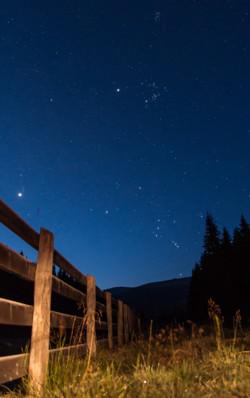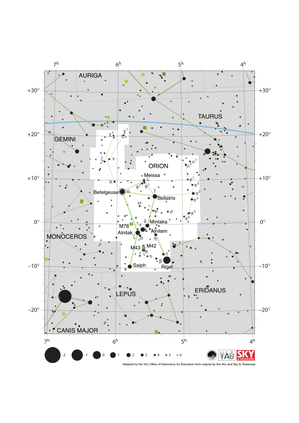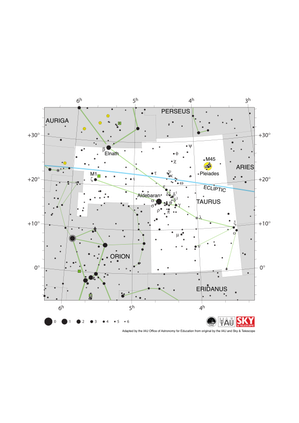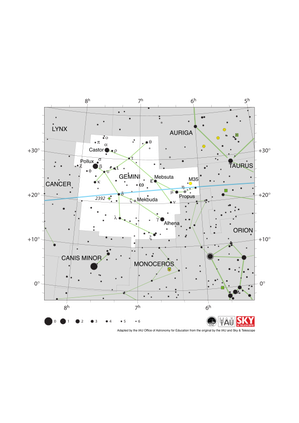Glossary term: Gémeaux
Description: Les Gémeaux sont l'une des 13 constellations du Zodiaque et l'une des 88 constellations modernes telles qu'acceptées par l'Union astronomique internationale, mais elle remonte à bien plus loin dans le passé : elle faisait déjà partie des 48 constellations nommées par l'astronome Claude Ptolémée au IIe siècle. La constellation tire son nom de ses deux étoiles les plus brillantes, Castor et Pollux, qui, dans la mythologie babylonienne, étaient des jumeaux et des dieux mineurs. Les Gémeaux sont visibles en hiver dans l'hémisphère nord, entre les constellations du Taureau et du Cancer. Diverses cultures à travers le monde ont leurs propres histoires associées à cette constellation et à ses étoiles. Castor et Pollux se trouvent respectivement à environ 50 et 30 années-lumière de la Terre. Environ 80 étoiles peuvent être observées à l'œil nu dans les Gémeaux. Parmi les objets remarquables du ciel profond situés dans la région de cette constellation, citons M 35, NGC 2158, NGC 2392 et Abell 21.
Related Terms:
See this term in other languages
Term and definition status: The original definition of this term in English have been approved by a research astronomer and a teacher The translation of this term and its definition is still awaiting approval
The OAE Multilingual Glossary is a project of the IAU Office of Astronomy for Education (OAE) in collaboration with the IAU Office of Astronomy Outreach (OAO). The terms and definitions were chosen, written and reviewed by a collective effort from the OAE, the OAE Centers and Nodes, the OAE National Astronomy Education Coordinators (NAECs) and other volunteers. You can find a full list of credits here. All glossary terms and their definitions are released under a Creative Commons CC BY-4.0 license and should be credited to "IAU OAE".
If you notice a factual or translation error in this glossary term or definition then please get in touch.
Related Media
Les étoiles les plus brillantes du ciel
Credit: Giorgia Hofer/IAU OAE
License: CC-BY-4.0 Creative Commons Attribution 4.0 International (CC BY 4.0) icons
Romanian Orion
Credit: Alex Conu/IAU OAE
License: CC-BY-4.0 Creative Commons Attribution 4.0 International (CC BY 4.0) icons
Étoile filante des Géminides
Credit: Jianfeng Dai/IAU OAE (CC BY 4.0)
License: CC-BY-4.0 Creative Commons Attribution 4.0 International (CC BY 4.0) icons
Related Diagrams
Orion Constellation Map
Credit: Adapted by the IAU Office of Astronomy for Education from the original by IAU/Sky & Telescope
License: CC-BY-4.0 Creative Commons Attribution 4.0 International (CC BY 4.0) icons
Taurus Constellation Map
Credit: Adapted by the IAU Office of Astronomy for Education from the original by IAU/Sky & Telescope
License: CC-BY-4.0 Creative Commons Attribution 4.0 International (CC BY 4.0) icons
Cancer Constellation Map
Credit: Adapted by the IAU Office of Astronomy for Education from the original by IAU/Sky & Telescope
License: CC-BY-4.0 Creative Commons Attribution 4.0 International (CC BY 4.0) icons
Gemini Constellation Map
Credit: Adapted by the IAU Office of Astronomy for Education from the original by IAU/Sky & Telescope
License: CC-BY-4.0 Creative Commons Attribution 4.0 International (CC BY 4.0) icons
Auriga Constellation Map
Credit: Adapted by the IAU Office of Astronomy for Education from the original by the IAU and Sky & Telescope
License: CC-BY-4.0 Creative Commons Attribution 4.0 International (CC BY 4.0) icons
















